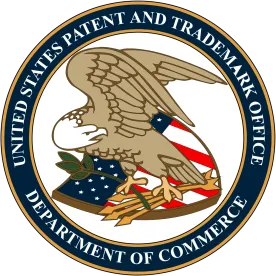The USPTO has issued a request for comments on proposed changes to requirements for admission to the patent bar. Last week I had an opportunity to speak with Commissioner for Patents Drew Hirshfeld, who currently is performing the functions and duties of the Under Secretary of Commerce for Intellectual Property and Director of the USPTO, about the proposed changes and the recent spotlight on the lack of gender diversity in the patent bar.
Gender Diversity In The Patent Bar
While Congress has been giving attention to the underrepresentation of female inventors in the U.S. patent system, several recent articles have addressed the low representation of women in the patent bar. The USPTO does not publish data on the gender of registered patent practitioners. Indeed, while the application form has boxes to check for “Mr.” or “Ms.” the USPTO does not include that information in its publically available roster of practitioners.
In his article in The John Marshall Review Of Intellectual Property Law, Saurabh Vishnubhakat used U.S. Census Bureau name/gender data to estimate the gender of registered practitioners based on their first names. Out of the 40,640 registered practitioners he analyzed, he estimated 69.39% were male, 18.12% were female, and 12.50% were of unknown gender.
I wonder what the Census Bureau data says about the likely gender of a person named Courtenay….
Prof. Vishnubhakat did not delve into possible reasons for this gender imbalance, but in her article in IP Theory, Mary Hannon asserts “[q]ualified women are unnecessarily excluded from membership in the ‘patent bar’ as a result of the perpetuation of an institutionally biased and archaic set of scientific and technical requirements by the [USPTO].” She suggests three solutions the USPTO could implement to “foster greater inclusion”:
-
expanding the enumerated technical degrees that automatically satisfy the scientific and technical requirements for patent bar eligibility
-
removing the undue requirements regarding program accreditation (for computer science degrees) and coursework
-
implementing an apprentice model as an alternative path to patent bar eligibility
While not directly responding to these articles—and without mentioning gender diversity—the USPTO’s proposed changes to the requirements for admission to the patent bar would both expand the list of technical degrees that automatically satisfy the scientific and technical requirements for patent bar eligibility and loosen the requirements for satisfying the scientific and technical requirements based on coursework.
The Proposed Changes To Patent Bar Eligibility
As set forth in this Notice, the USPTO is proposing three categories of changes to the “technical and scientific qualifications that may typically make applicants eligible” to take the patent bar exam:
-
Expand the list of “Category A” bachelor’s degrees that are accepted as “prima facie evidence of the requisite technical and scientific qualifications”
-
Expand “Category A” to include advanced degrees (master’s and doctoral degrees)
-
Revise the coursework requirements of “Category B” to be more flexible, but still require at least one core science course that has a lab component.
During our interview, Commissioner Hirshfeld made clear that although the USPTO is proposing these changes now, they should not be understood as foreclosing other changes. This is not necessarily the USPTO’s final word on this issue. In addition to considering responsive comments, the USPTO may continue to evaluate the patent bar qualifications, and other ways to address diversity issues.
What More Can The USPTO Do?
I found it interesting that the USPTO does not publish gender data, until I realized the USPTO may not have the authority to do so. The recently reintroduced IDEA Act of 2021 would permit the USPTO to collect voluntarily provided demographic data from inventors (not patent practitioners), but would require that information to be kept confidential except in anonymized formats in disaggregated reports. If the USPTO is not permitted to collect and analyze demographic data from patent bar applicants, how can it identify and address any policies that contribute to the underrepresentation of women and other minorities?
Commissioner Hirshfeld noted that the National Council for Expanding American Innovation, whose mission includes helping the USPTO increase “the involvement of women and other underrepresented groups” in the U.S. “innovation ecosystem,” and the new Biden administration may propose broader initiatives to address the participation rates of minorities in the U.S. patent system. In the meantime, I know a number of legal and industry organizations, including IPO, AIPLA, and the PTAB Bar Association, are actively encouraging and supporting women interested in careers as patent practitioners, and working to identify unnecessary barriers to entry that particularly impact women and other minorities.




 />i
/>i

